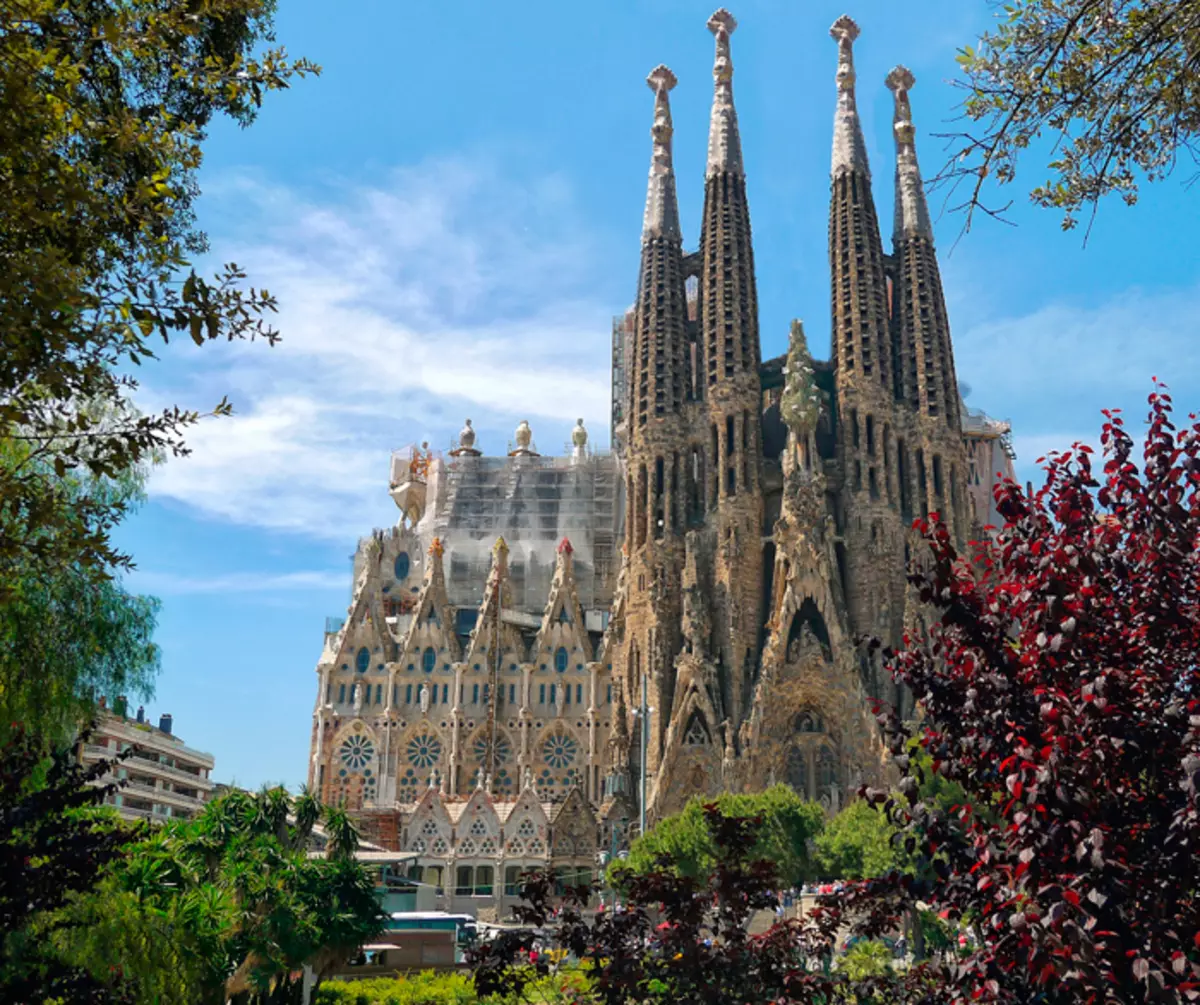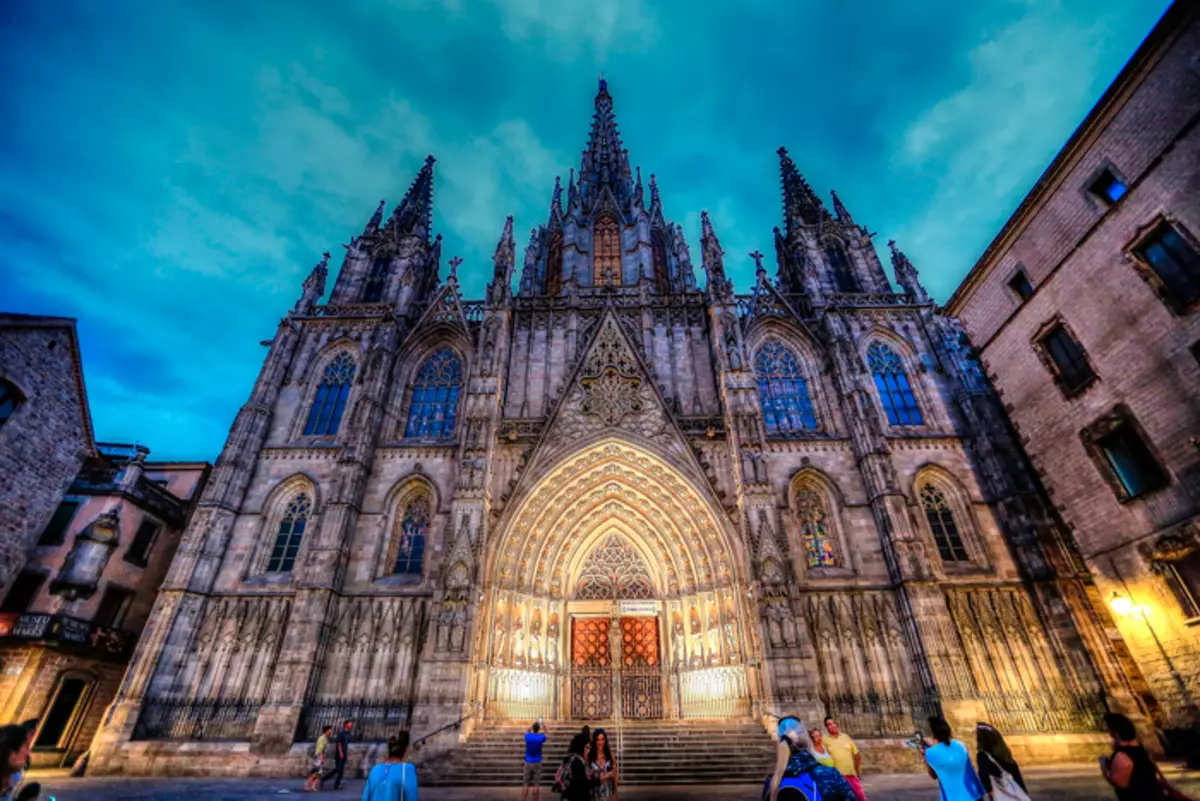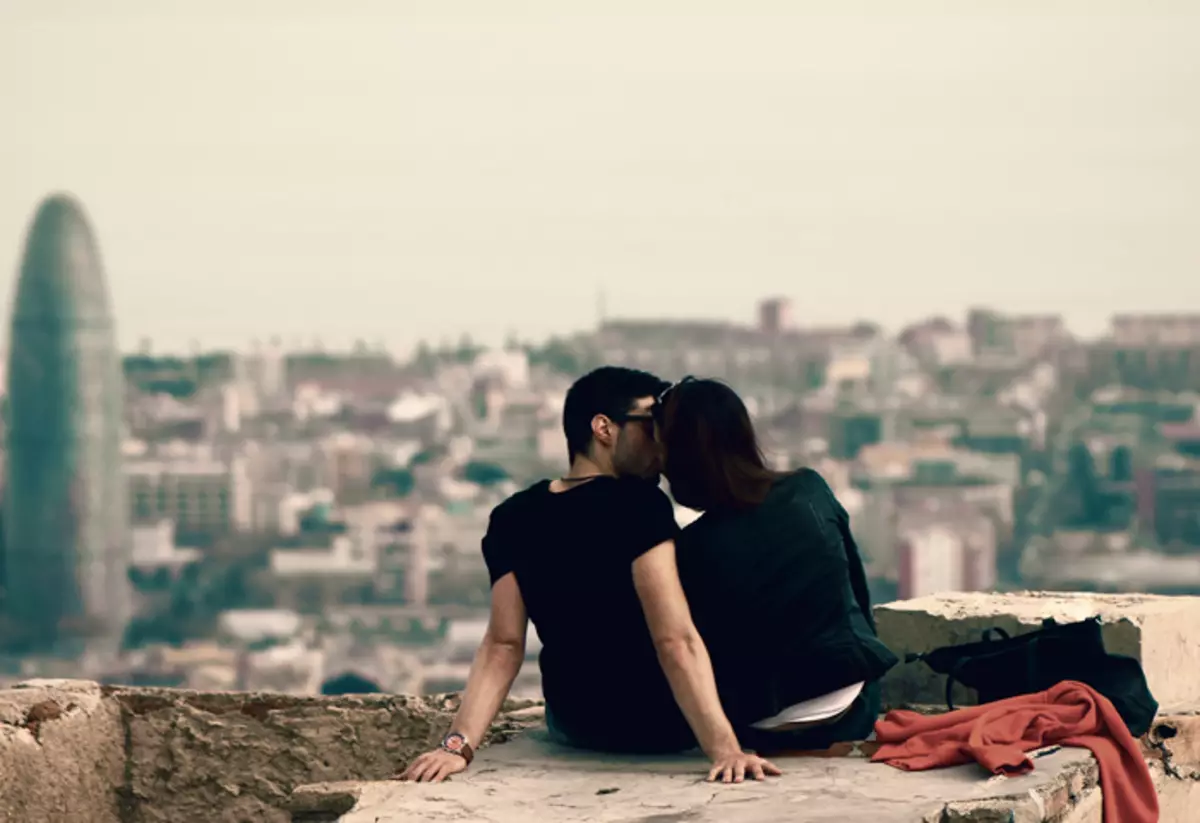Cities like people. Everyone has its own unique face. Paris Elegance, impregnated by Bohemian Spirit. Vienna is elegant in his classicism. Medieval Prague mystically fascinating. Barcelona is Modern City, Firework City. No wonder the capital of Catalonia loves modern youth. Go to Barcelona Days for five "sweating", have fun very fashionable. The Mediterranean port city, like a gem, sparkles each of his face.
Barcelona Gaudi.
There is such a game - "Associations". You call the word, and the partner is the first thing that in connection with this word comes to mind. So, with the word "Barcelona", the first thing that the majority arises in the head, is the name of the architect Antonio Gaudi. The great Spanish architect exactly half of his × 20 masterpieces creations created for his beloved city. Some of them are available to everyone and is the decoration of the central streets of Barcelona, part is hidden from the eyes behind the walls of private possessions. But together, they attach the capital of Catalonia that the unique charm, for which thousands of tourists pull into the city. There is even a special tour Marshrut "Barcelona Gaudi". The journey begins from Catalunya Square, after a small walk along the picturesque Boulevard Passeig de Gràcia will be a turn to Carrer de Casp. It contains the famous Calvet House. Former profitable house with openwork balconies, built by Gaudi in 1900, at the beginning of the 20th century was recognized as the best building of Barcelona. Although this is not the most amazing structure of the wizard. Where the other famous building on Passeig de Gràcia is refined exquisitely - the house of Balo. This "anatomical structure" has several other names - bone house, house-dragon. The broken gear, reminiscent of the dragon hump, and a mosaic facade, changing color, depending on the lighting, and really make the house similar to great reptiles. And the jumpers of the second floor, resembling the limbs of the skeleton, and the smallest balconies in which the skull can be seen, justify the other name of the house. This masterpiece appeared in Barcelona in 1904.

The last residential building of Gaudi is Mila House
Photo: pixabay.com/ru.
On the same Passeig de Gracia boulevard, but on the other side of the street - the last residential structure of Gaudi: Mila House. At the house there is a second name - Pedrera, which means "Kamenna". The house, as if carved in a rock, washed by the winds, originally scared Barcelonians. But now he is included in the UNESCO World Heritage List and is one of the most recognizable Creations of Gaudi.
Another famous house - House Vicens - is slightly away from the central streets. This house is the first architectural experience of Antonio Gaudi. He was erected from 1883 to 1888 by order of the owner of the ceramic tile plant Manuel Vissa Muntanner. That is why the main home decoration is its facades, made of ceramics. In this structure, Gaudi tried his creative method of combining the "live in love". Ceramic panels with the image of velvetsev flowers are placed around the facade. Forged inflorescences decorate gratings at home. At the entrance - a huge ceramic vase with creeping plants. House Vicens is private. You can admire it only from the street. The yard is launched only once a year - May 22.
After inspection of residential buildings, it's time for walking in the park. On the bus you will be taken to Park Guell, where everything is from the benches and fences to fabulous gingerbread houses - Made by the magic plan of Gaudi. Count Euseby Guell-I-Bassigupu - industrialist, politician and patron, but also, Gaudi's friend - decided to create a residential village for the Catalan elite. The resulting masterpiece then bought the city council of Barcelona and created the city park there. The symbol of the park is a mosaic salamander, as souvenirs sold in many stores of Barcelona. Wavy benches are an indispensable attribute of photo shoots. In general, to look into every corner of the park, you need at least two hours.

The main creation of Gaudi is the Sagrada's unfinished Cathedral
Photo: pixabay.com/ru.
And after the park you will be brought to the main creation of Gaudi, who made his name of the immortal - unfinished Sagrada Cathedral. It is not necessary to talk about it. This masterpiece must be seen and scrupulously study every item. Only to get around this magnificence around, peering into numerous sculptural groups, you need at least an hour. And if you go inside and deepen in the forest of columns, swinging your "crowns" under the scenes - all two hours and a half. No wonder on a tour of Gaudi's places in Barcelona, all day is given. And this is despite the fact that a number of masterpieces - the pavilions of the manor of Guel, the house of Figueras, the College of the Order of St. Teresa - remain beyond the excursion. You can see them on your own. And then the whole Barcelona Gaudi will reveal before you.
Barcelona Gothic
Almost in every European city, whose age exceeds 500 years, there is an old medieval quarter. Barcelona is an ancient city, he is about 2,000 years old. As early as the Roman Empire, the settlement of Barsino was located here. Therefore, the old part of the city in the capital of Catalonia is a multi-layered. The remains of Roman towers and columns are hidden in the courtyards and basements of later buildings - mostly medieval period. The quarter is called - Gothic. In the evenings, when the shutters of numerous shops, which are filled with narrow streets, closes, the quarter and really clarifies mystical feelings. Stone arches, sticking on the background of the dark blue sky. Pointed spiers, Gorgoles hanging from eaves ... and gloomy shadows flashing in the doorways: the quarter is knitted by the Arabic and African countries. The day is a charming place. Cooling reigns on the narrow streets - the hot sun does not reach the pavement. On the squares, the summer cafes are broken, where you can pass the time behind the glass of beer or Sangria. The heart of the quarter is the Barcelona Cathedral, called the Cathedral of the Holy Cross and Holy Evlalia. The 13-year-old Euslav took martyrdom from the hands of pagans in the IV century. In memory of it, an openwork Catholic temple appeared in the heart of the old Barcelona. No matter how you plot on winding streets, from some part, you will definitely finally brake into this personification of Gothic.

Barcelona Cathedral, called the Cathedral of the Holy Cross and Saint Evlalia
Photo: pixabay.com/ru.
Better, of course, approach him from the main facade. You can get through the new area (Plaza Nova). Landmark - two large stone Roman towers and remnants of ancient walls. This is the former gate to the city. Needly - a compact episcopal palace in the style of Catalan Baroque. Near it - comfortable benches, on which it is convenient to wait for friends or just relax in the tank. Another decoration of the square is the white-stone house of the archchyakon, in which the greenery of the courtyard of which tourists love so much. The house is not simple. Due to the set of rearrangements, it combines gothic styles, modern, Renaissance. By the way, in the Gothic Quarter such mixing styles can be found often. Many homes are erected on the foundations of still Roman buildings. And the breeches in the stone laying may well be embedded with modern panels, and even with quartz windows. By the way, on the house of the archchiakon, which is currently performing the functions of the city archive, there is a curious detail: a modern mailbox appeared on the facade in 1902. Three forged swallows and a turtle are not just a decor, but a symbol: swallows mean the independence of justice, turtle - bureaucracy.
Right behind this house overlooks the cathedral. Go around it from all sides, admire not only with an elegant front entrance, but also with strict medieval side walls. And also look into the chapel. In her courtyard lives 13 white geese. Naughty nepheal is also a symbol - the imparation and purity of Saint Evolia.
In the wilds of the Gothic Quarter, you can stumble upon another famous area - Plaza de San Jauma. This is a former administrative center of the city. The main buildings are concentrated around the square - the City Hall, the House of Canonikov and the Palace of Government. From gothic here little has been preserved. Well, except for the bridge in the neo-style style, thrown between the two buildings. True, he is not at all ancient, and 1926 buildings. But there is no doubt. But Plaza del Rey (Royal Square) is just the center of Gothic masterpieces. Here is the Royal Palace, in which the residence of County's graphs from the XIII in the XV century was located, the Klariana-Padeyas XV century mansion, the Gothic chapel of St. Agatha. The area is famous for the fact that it was on April 3, 1493, the King Fernando and his wife Isabella took Christopher Columbus, who returned from a swim in America.
The Gothic Quarter is glorified not only with its medieval architecture, but also by famous bohemian institutions. Here, for example, there is a famous Art Cabaret "Four Cat", in which they loved to spend time Pablo Picasso, Julio Gonzalez, Santiago Rusignol and other famous creative people.
Barcelona youth

In Barcelona many students from all over the world
Photo: pixabay.com/ru.
There are many students from around Barcelona. Some drive here passing, two days, especially to take off. In the afternoon, the most fun place in Barcelona is the central pedestrian street of La Rambla, or the forest Rambles, as Barcelonians call it. On the boulevard a little less than a kilometer long, which stretches from Catalunya Square to the monument to Columbus on the embankment, is concentrated bright, colorful life of the holiday city. A mini-show of various teams, a whole alley of "live statues", which are real in their unusual images under the trees and only trembling eyelashes from annoying flies in the sculpture of a living person. The most likely "Monument" must be sure to put a coin. In vain, whether, sufferings are tormented at the heat ... Fans of "Barcelona" love to gather on Rambl, so do not be surprised that in the surrounding tents there are many souvenirs with a symbolism of a football club. Along the street there are tourist tents, where guidebooks are sold and where you can make yourself an excursion.
On Ramble, the most famous market of Barcelona is Beria. Here you can buy Catalan cheeses, smoked meat, fruit ... By the way, for the convenience of tourists, cups with a mix of already chopped fruits are sold. Very comfortably. Walk and fall ... as any pedestrian street, La Rambla is filled with numerous shops, cafes and bars. Will be transferred to the Spirit if you get tired ...
Closer to night, fun shifted towards the beaches. Nightlife in Barcelona begins late - about two hours. It was then that numerous dance floors and nightclubs with beach playgrounds are filled with the people. The entrance to most clubs is paid, costs about 15 euros. The most part of the Barcelona is the port of Olimpik. A lot of minibars with live music of various styles are concentrated here. In the club Habana-Barcelona - incendiary Cuban dances. In the Chocolate club, R'n'B-Tusovka is collected. Dancing until the morning right on the beach. Here is the most famous nightclub Barcelona - Opium Mar. The club is the best DJs of the world. But unlike other nightly institutions of the city there is a strict face control. But the oldest rock club of Barcelona Syeskovar is in the Gothic Quarter, near the Royal Square. In general, a fun holiday.
